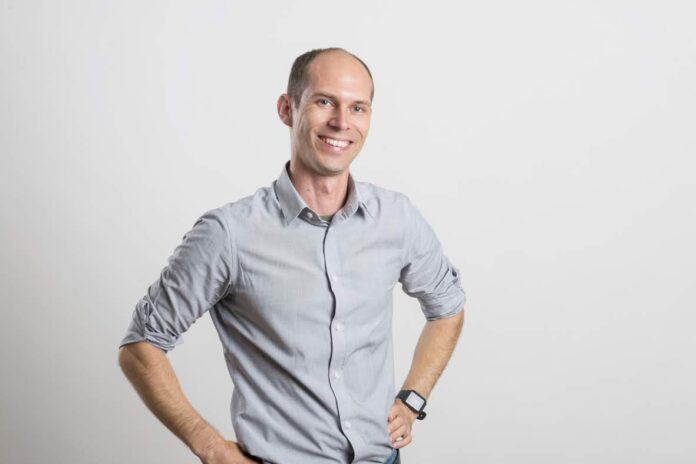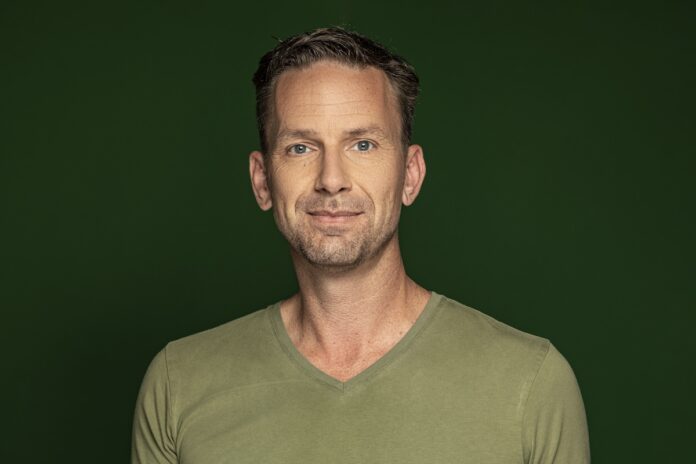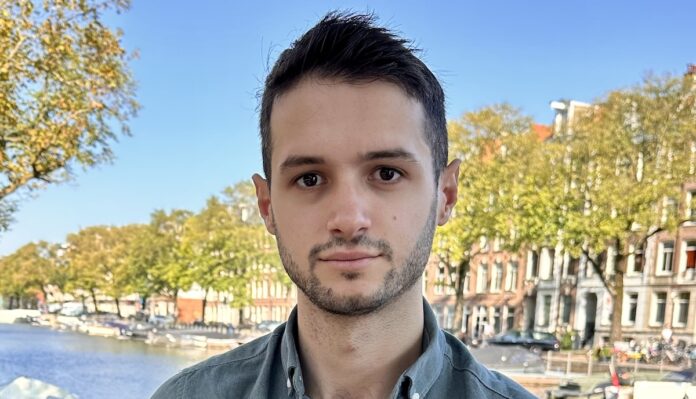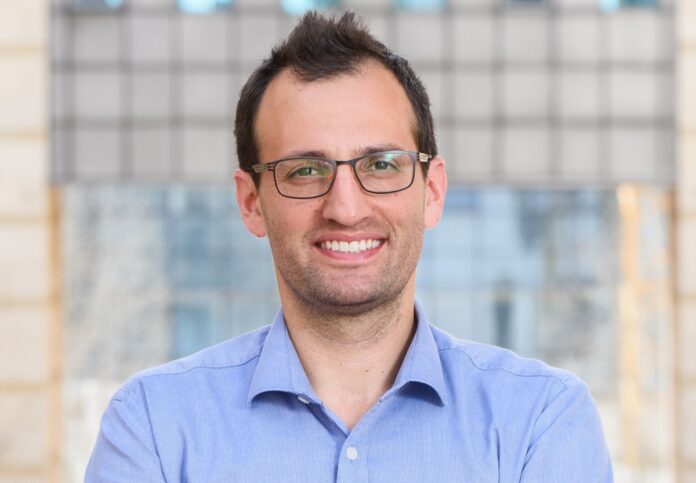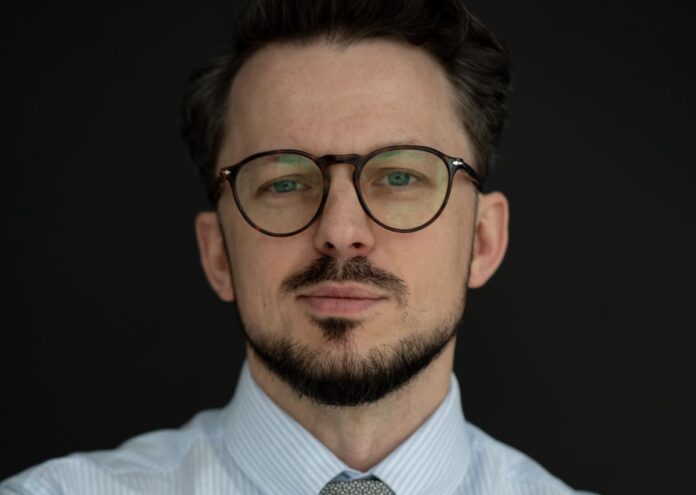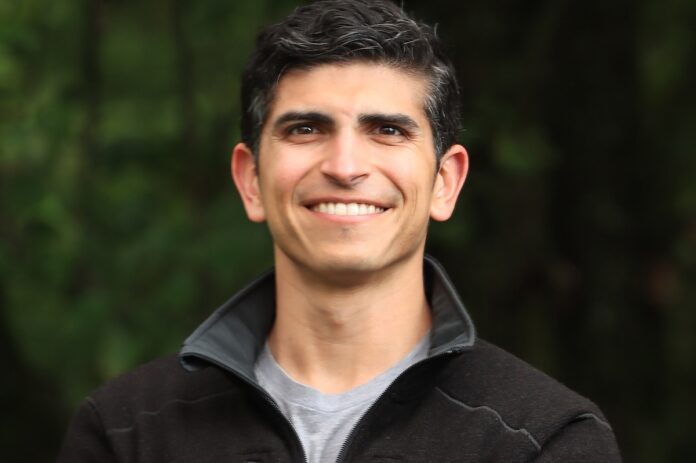From Research to Radiology: How contextflow is Pioneering AI Solutions for Medical Imaging
Could you briefly introduce contextflow and the team behind it, and tell us what inspired you to start the company?
contextflow is a company I co-founded in Vienna with a mission to transform radiology workflows using artificial intelligence. Our flagship product, ADVANCE Chest CT, is designed to assist radiologists in analysing chest CT scans, especially for complex conditions like lung cancer, interstitial lung disease (ILD), and chronic obstructive pulmonary disease (COPD). ADVANCE Chest CT integrates seamlessly into existing workflows, providing both quantitative and qualitative insights that allow radiologists to make faster, more accurate diagnoses.
The team behind contextflow brings decades of expertise in medical imaging, AI, and healthcare innovation:
I’m Markus Holzer, CEO, with a background in Computer Science and Innovation Management from the Vienna University of Technology. My focus is on guiding contextflow’s strategic direction and ensuring our solutions meet real clinical needs.
Georg Langs, our Chief Scientist, is a Professor at the Medical University of Vienna and a research affiliate at MIT’s prestigious CSAIL (Computer Science and Artificial Intelligence Laboratory). Georg leads the technical and scientific vision at contextflow, drawing on deep expertise in imaging analysis.
Allan Hanbury, a Professor of Data Intelligence at the Vienna University of Technology, has coordinated major EU-funded AI projects, bringing invaluable experience in data science and medical informatics to the team.
Marcel Wassink, our Chief Commercial Officer, is a seasoned executive who built Philips’ speech recognition business, which was later acquired by Nuance and ultimately by Microsoft. Marcel drives our sales and partnership strategies, leveraging his extensive experience in scaling businesses within the healthcare sector.
The idea for contextflow was inspired by our work on the EU-funded KHRESMOI project, where we experienced the challenges radiologists face daily: growing workloads, specialist shortages, and increasingly complex cases. We saw an opportunity to bring advanced AI from research into clinical practice, supporting radiologists with tools that help make their jobs a bit easier and diagnoses more precise, ultimately benefiting patients with faster, more reliable results
What is the vision behind contextflow, and how do you plan to achieve it in the next few years?
With a focus on chest CT imaging for conditions like lung cancer, ILD, and COPD, contextflow aims to equip radiologists with AI tools that increase diagnostic accuracy, efficiency, and confidence. Our goal is to make radiology workflows more effective and allow radiologists to concentrate on providing high-quality patient care by reducing the time spent on repetitive tasks.
We have recently shifted our focus to securing reimbursement in Europe, starting with lung cancer. Achieving this milestone will be key to making our technology widely accessible and to supporting radiologists in identifying and managing lung cancer cases more effectively. By demonstrating the clinical and economic value of our tools, we aim to ensure that hospitals and healthcare providers see both cost savings and improved patient outcomes with contextflow’s solutions.
Who is your primary target audience, and how do you ensure that their specific needs are met with your solutions?
Our primary target audience includes radiologists and radiology departments, particularly those managing high volumes of chest CT cases, as well as healthcare administrators focused on cost-effectiveness and improved patient outcomes. Additionally, we work closely with PACS vendors and hospital IT teams to ensure smooth integration into existing workflows.
To address the specific needs of radiologists, we design our AI tools to support their daily routines by reducing the time spent on repetitive tasks and improving diagnostic accuracy for challenging cases like lung cancer, ILD, and COPD. We collaborate directly with radiologists during the development process, gathering continuous feedback to refine and adapt our solutions so they’re clinically relevant and intuitive. Our focus on demonstrating the clinical and economic value of our tools is also central to our efforts to secure reimbursement, which will make contextflow more accessible and impactful in European hospitals.
For healthcare payers, we emphasise the cost savings our solutions can bring, as our tools help radiologists diagnose more quickly and reduce the likelihood of costly follow-up procedures. By partnering closely with radiologists, hospital IT, and administrative stakeholders, we ensure our solutions are both effective and aligned with the operational needs of modern healthcare facilities.
What are some of the key challenges you have encountered in the healthtech or medtech industry, and how has contextflow managed to overcome them?
One of the key challenges in the healthtech industry is the complexity of integrating new AI technologies into existing clinical workflows. Hospitals often operate with different PACS systems, each with unique configurations and requirements, which can make seamless integration a significant hurdle. At contextflow, we address this by working closely with PACS vendors and hospital IT teams to ensure our solutions fit naturally into radiologists’ daily routines without disrupting their workflow.
Another major challenge is demonstrating the clinical and economic value of AI tools in healthcare. Health systems are often cautious about adopting new technologies unless there’s a clear benefit to both patient outcomes and cost-effectiveness. To address this, we conduct rigorous clinical studies and gather real-world data to validate the effectiveness of our AI tools, focusing specifically on measurable benefits like time savings and diagnostic accuracy improvements. This data not only helps radiologists but also supports our efforts to secure reimbursement in Europe, which is a critical focus for us in the coming years.
Finally, the regulatory landscape in healthtech can be challenging, with rigorous standards to ensure patient safety. contextflow has achieved CE certification for our ADVANCE Chest CT under Europe’s new MDR framework, which required substantial investment in quality management and compliance processes. By meeting these high standards, we demonstrate our commitment to safety and efficacy, which is crucial for building trust among healthcare providers and patients alike.
In a highly competitive market, what makes contextflow stand out from other companies in the field?
What makes contextflow stand out in the competitive AI radiology market is our comprehensive approach to chest CT imaging and our commitment to making a real impact on radiologists’ workflows. Our flagship product, ADVANCE Chest CT, isn’t just about detecting a single disease; it provides radiologists with comprehensive support for multiple conditions, including lung cancer, ILD, and COPD. By covering a range of findings in one tool, we help ensure radiologists don’t miss any crucial details within a scan, which sets us apart from many solutions that focus narrowly on one or two patterns.
Workflow integration is another important differentiator. We know that radiologists don’t have time for interruptions or complex new systems. That’s why our solution is designed to fit seamlessly into their existing PACS, allowing them to access AI insights without changing their usual routine. This smooth integration makes our technology not only easier to adopt but also genuinely valuable in everyday practice.
We have also put a lot of effort into making our technology transparent and trustworthy. Our AI is designed to explain its findings, so radiologists can see how results are generated and have confidence in what the tool presents. This is a major factor for adoption in clinical environments, where transparency is crucial.
Clinical validation has also been a key focus.
We’ve conducted extensive studies and partnered with leading medical institutions to ensure our tools deliver real value in a clinical setting. This evidence-based approach demonstrates the effectiveness of our solutions, which supports our goal to secure reimbursement in Europe, starting with lung cancer.
Ultimately, by combining comprehensive diagnostic capabilities, easy integration, transparency, and a clear focus on reimbursement and clinical impact, contextflow brings unique value to radiology departments that is unmatched in the market. We’re here to support radiologists in their work, not replace them, and that’s a mission we stand firmly behind.
Can you share any exciting developments or new features that contextflow is planning to introduce in the near future?
We’re excited to share some recently released and upcoming developments at contextflow aimed at enhancing radiologists’ workflows and improving patient outcomes:
Malignancy Scoring Integration: We’ve incorporated a malignancy Similarity Index (mSI) into ADVANCE Chest CT. This feature analyses lung nodules for malignancy, assisting in early cancer detection and reducing unnecessary procedures. In clinical studies, the mSI has been shown to detect cancer up to one year sooner while reducing false positives.
TIMELINE Feature for Nodule Tracking: Our TIMELINE feature allows radiologists to visualize and quantify changes in lung nodules over time, facilitating efficient follow-up assessments and treatment planning.
Incidental Pulmonary Embolism Detection: We are introducing an incidental Pulmonary Embolism (PE) feature, designed to alert radiologists to potential cases of PE that may otherwise go undetected. This feature will help radiologists identify PEs in chest CT scans where the primary focus might be elsewhere, ensuring that critical findings are not overlooked.
Focus on Reimbursement: We’re actively pursuing reimbursement approvals in Europe, starting with lung cancer applications. Securing reimbursement is pivotal for making our technology accessible to a broader range of healthcare providers and patients, thereby amplifying its impact.
What role does artificial intelligence play in your technology, and how do you see its future within the medical sector?
Artificial intelligence is at the core of contextflow’s technology. Our AI-driven tools analyse and interpret chest CT images, detecting complex patterns associated with conditions like lung cancer, ILD, and COPD. By automatically highlighting relevant findings and providing quantitative insights, AI helps radiologists make faster, more accurate decisions, reducing the likelihood of missed diagnoses and allowing them to focus on high-quality patient care.
AI’s role is not to replace radiologists but to support them by handling repetitive tasks, providing contextual information, and identifying subtle patterns that might otherwise be missed. For example, our AI doesn’t just detect a lung nodule; it tracks changes over time and offers insights on malignancy likelihood, which can be critical in early cancer detection and treatment planning.
In the future, I see AI playing an even larger role in the medical sector as its capabilities expand to cover more imaging modalities and other areas of healthcare. AI will likely be instrumental in helping healthcare systems manage increasing workloads, ensuring diagnostic consistency, and potentially identifying new biomarkers that advance medical research. As AI becomes more integrated and accepted, I envision it as a critical partner for healthcare providers, supporting them in achieving better outcomes while maintaining a human-centered approach to medicine.
Building a startup is not easy—what are some of the most valuable lessons you’ve learnt along the way?
Building contextflow has been an incredible journey, filled with both challenges and rewarding lessons. One of the most valuable lessons I’ve learnt is the importance of focus and prioritisation. In a startup, resources are often limited, and there are countless directions you could go. It’s essential to stay clear on your mission and prioritise initiatives that drive real value for users. For us, that has meant focusing on building solutions that genuinely improve radiologists’ workflows and patient outcomes.
Another key lesson is the importance of building strong relationships and partnerships. From day one, we’ve collaborated closely with radiologists, PACS vendors, and hospital IT departments to ensure our tools are effective and seamlessly integrate into existing workflows. Listening to feedback from end users has been invaluable, as it allows us to continuously adapt and refine our solutions based on real clinical needs.
Adaptability is also crucial. The healthcare and regulatory landscapes are constantly evolving, and being able to adjust quickly to changes in technology, compliance requirements, or market dynamics has been critical to our growth. For example, our recent focus on securing reimbursement for lung cancer in Europe reflects our adaptability to meet both clinical and economic needs.
Lastly, I’ve learnt the importance of having a mission-driven team. Surrounding yourself with people who believe in your vision and are passionate about making a difference is essential for long-term success. Our team’s dedication to improving healthcare through AI has kept us moving forward, even when things get tough.
For other aspiring entrepreneurs, what are three essential pieces of advice you would give when starting a company in the tech or healthcare space?
For anyone looking to start a company in the tech or healthcare space, here are three key pieces of advice I’d offer based on my experience with contextflow:
Understand the Problem Deeply: Before diving into solutions, spend time understanding the pain points of your end users. In healthcare, this means working closely with professionals on the ground, whether they’re doctors, administrators, or IT staff. At contextflow, our close collaboration with radiologists has been invaluable in developing tools that actually solve real-world challenges.
Navigate the Regulatory Landscape Early: Healthcare is a highly regulated industry, and compliance requirements can be a significant barrier if not addressed from the start. Research the regulatory landscape early and build these considerations into your development process. This will save time and resources down the road and ensure that your product is safe, effective, and meets industry standards. Achieving CE certification for ADVANCE Chest CT was a crucial milestone for us, and having regulatory insights from the start made that process smoother.
Build a Mission-Driven Team: In the healthcare sector especially, the work can be challenging and progress may feel slow at times. Surround yourself with people who believe in your mission and are passionate about making a difference. A dedicated, resilient team is essential for tackling the unique challenges of healthcare and keeping you motivated through the ups and downs.
Starting a company in healthcare can be complex, but if you keep your mission clear, stay focused on real clinical needs, and build a strong, committed team, the journey can be incredibly rewarding.
How does contextflow address the evolving demands of radiologists, and what feedback have you received from your users so far?
At contextflow, we prioritise understanding and addressing the evolving needs of radiologists. Our flagship product, ADVANCE Chest CT, is designed to integrate seamlessly into existing workflows, providing comprehensive support for conditions like lung cancer, interstitial lung disease (ILD), and chronic obstructive pulmonary disease (COPD). By automating repetitive tasks and offering quantitative insights, we enable radiologists to focus more on patient care.
User feedback has been instrumental in refining our solutions. Radiologists have expressed appreciation for features like the TIMELINE view, which facilitates efficient follow-up imaging analysis. Dr. Gerlig Widmann, Managing Senior Physician at the University Department of Radiology at the Medical University of Innsbruck, highlighted the value of this feature in clinical practice, noting its utility in analysing follow-up scans.
Additionally, our focus on transparency and integration has been well received. Jacob Visser, Chief Medical Information Officer & Head of Imaging IT and Value-Based Imaging at Erasmus MC, emphasised the importance of contextflow’s transparent approach compared to other AI solutions, appreciating its design that supports workflow while leaving final decisions to the radiologist.
By continuously engaging with radiologists and incorporating their feedback, we ensure that our tools evolve in line with their needs, ultimately enhancing diagnostic accuracy and efficiency.
What are your thoughts on the future of AI in healthcare, and how do you think it will change the industry over the next decade?
I believe the future of AI in healthcare is incredibly promising, with the potential to transform nearly every aspect of the industry. In the next decade, I expect AI to play a pivotal role in helping healthcare providers manage the growing complexity and volume of medical data, improve diagnostic accuracy, and ultimately provide more personalised patient care.
In radiology specifically, AI will continue to evolve from being a supportive tool to a highly integrated, essential component of diagnostic workflows. AI-powered tools like ours will help radiologists focus on more complex cases by automating repetitive tasks and providing insights that may be challenging to detect with the human eye alone. Over time, as AI systems become more advanced and gain the trust of healthcare professionals, they could even identify new biomarkers, contributing to earlier detection and new treatment pathways.
Beyond radiology, AI’s ability to analyse large-scale data could enable truly personalised medicine, where patient care is tailored based on specific health profiles and predicted responses to treatments. I also foresee AI becoming crucial in preventive care, helping predict patient risk factors and enabling earlier intervention to prevent diseases before they progress.
Of course, for AI to reach its full potential, the industry will need to address challenges such as regulatory standards, data privacy, and ensuring that AI remains a transparent, trustable tool for clinicians. But with the right focus, AI has the potential to make healthcare more effective, accessible, and patient-centred over the coming decade.
How do you maintain a balance between innovation and regulatory compliance in the medtech sector, especially as you continue to grow?
Balancing innovation with regulatory compliance is essential in the medtech sector, particularly as we scale. At contextflow, we see compliance not as a barrier but as a guiding framework that ensures our solutions are safe, reliable, and effective. We incorporate regulatory requirements from the very start of our development process, which allows us to innovate within a structured and compliant framework.
Our approach to maintaining this balance involves building strong internal processes for quality management and working closely with regulatory experts to keep up-to-date with evolving standards. For instance, achieving CE certification for ADVANCE Chest CT under Europe’s MDR framework was a critical milestone for us. By embedding compliance into our product lifecycle, we can continue to develop new features and expand our offerings without compromising on patient safety or quality.
As we grow, we also prioritise transparency and collaboration with healthcare providers and regulatory bodies. We make it a point to ensure our AI solutions remain explainable, so radiologists and healthcare institutions can trust the technology. This balance between pushing the boundaries of what’s possible and adhering to rigorous standards is central to our mission. It allows us to bring cutting-edge AI tools to radiology while staying aligned with the regulatory requirements that keep patients safe.
Bildcredits contextflow
Thank you Markus Holzer for the Interview
Statements of the author and the interviewee do not necessarily represent the editors and the publisher opinion again.
